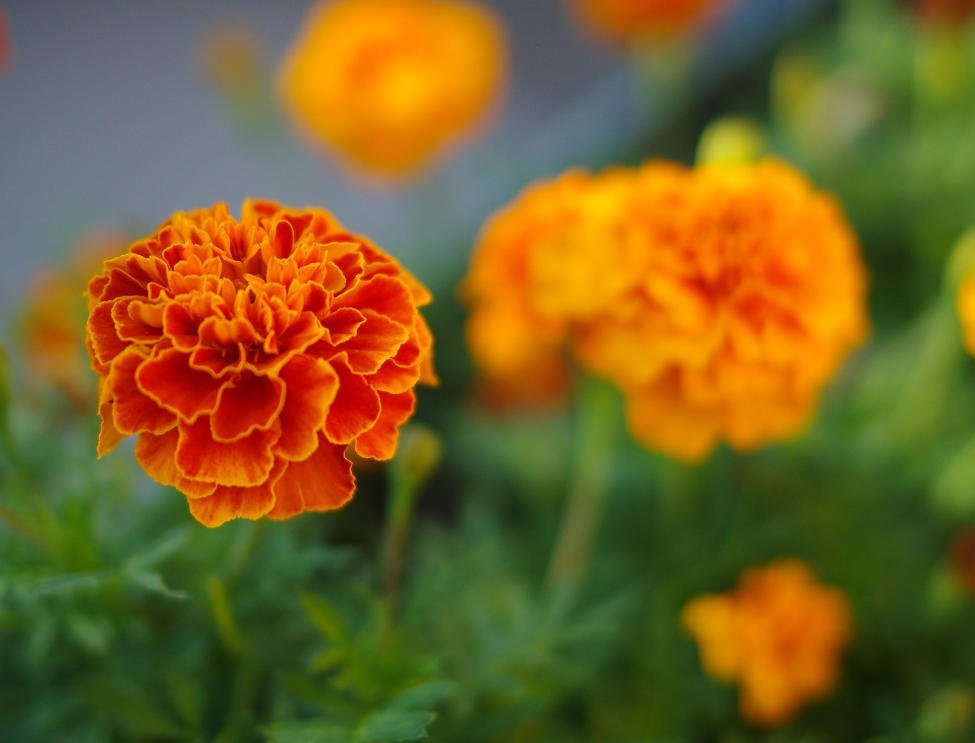Marigolds are vibrant, cheerful flowers that brighten up any garden space. They are also known for their ability to deter pests, making them a popular choice among gardeners. Growing marigolds in containers is an excellent way to enjoy their beauty and benefits, especially if you have limited garden space. This guide will walk you through the steps to successfully grow marigolds in containers, covering their basic needs, growing techniques, problem-solving, and more.
Basic Needs: Setting Up for Success
Marigolds thrive in well-draining soil and need plenty of sunlight to flourish. Choose a container that is at least 25 cm deep and has drainage holes to prevent waterlogging. The container can be made of any material, but terracotta or plastic pots are commonly used.
Fill the container with a high-quality potting mix that includes organic matter to provide the necessary nutrients. Marigolds prefer slightly acidic to neutral soil, with a pH between 6.0 and 7.0. Place the container in a sunny location where it can receive at least six hours of direct sunlight each day.
Growing Techniques: Planting and Nurturing Marigolds
Start by sowing marigold seeds or planting seedlings in your prepared container. If you are using seeds, plant them about 1 cm deep and space them 15 cm apart to allow room for growth. Water the soil thoroughly after planting to help the seeds settle.
Marigolds are relatively low-maintenance, but they do require consistent watering, especially during the hot summer months. Water the container whenever the top 2.5 cm of soil feels dry to the touch. Be careful not to overwater, as marigolds are susceptible to root rot if left in soggy soil.
To encourage bushy growth and more blooms, pinch back the growing tips of the plants when they reach about 10 cm in height. This will promote branching and result in a fuller plant. Deadheading, or removing spent flowers, will also encourage continuous blooming throughout the growing season.
Problem-Solving: Addressing Common Issues
While marigolds are hardy plants, they can encounter a few issues that might affect their growth. One common problem is powdery mildew, a fungal disease that causes a white powdery coating on the leaves. To prevent this, ensure good air circulation around the plants and avoid overhead watering. If powdery mildew appears, remove affected leaves and treat the plant with a fungicide if necessary.
Pests such as aphids and spider mites can also be a concern. Regularly inspect your marigolds for signs of pests and treat infestations with insecticidal soap or neem oil. Introducing beneficial insects like ladybugs can also help keep pest populations under control.
Harvesting and Storage: Enjoying Marigold Benefits
While marigolds are primarily grown for their ornamental value, their petals are edible and can be used in salads, teas, and other culinary applications. To harvest marigold petals, simply pick the flowers when they are fully open and gently pull the petals from the centre. Rinse the petals thoroughly before use.
If you want to save seeds for the next growing season, allow some flowers to dry on the plant. Once the seed heads are dry and brown, remove them from the plant and gently break them open to collect the seeds. Store the seeds in a cool, dry place until you are ready to plant them.
Tips: Maximizing Marigold’s Growth and Health
Choosing the right variety is essential for container gardening. Dwarf marigold varieties are ideal for containers, as they are compact and less likely to outgrow their space. Some popular dwarf varieties include French marigolds and signet marigolds.
Marigolds benefit from regular feeding. Use a balanced, water-soluble fertilizer every four to six weeks to keep the plants healthy and encourage abundant blooming. Be mindful not to over-fertilize, as too much nitrogen can result in lush foliage but fewer flowers.
The Joy of Container-Grown Marigolds
Growing marigolds in containers is a rewarding and enjoyable gardening project. These bright and cheerful flowers are easy to care for and add a splash of colour to any space. By understanding their basic needs, employing effective growing techniques, and addressing common challenges, you can enjoy a bountiful display of marigolds throughout the growing season. With a little effort and attention, your container-grown marigolds will thrive, providing beauty and pest control benefits to your garden.

